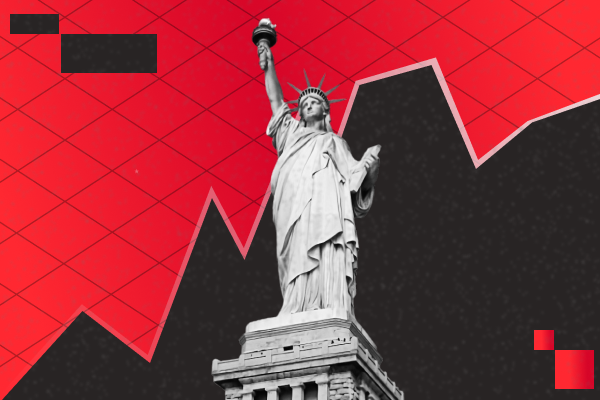Trading Signals 05/02 – 09/02
US Debt Crisis Resolved: Default Successfully Prevented

The U.S. debt ceiling, the maximum amount of money that the U.S. government is allowed to borrow, has been a topic of intense debate and negotiation in recent years. In 2023, the U.S. faced a potential default on its debt obligations, which could have had severe implications for the U.S. economy and the value of the dollar.
The End of a Bitter Dispute
The United States and financial markets worldwide have breathed a sigh of relief as the contentious debt dispute has finally reached its conclusion after weeks of intense negotiations. While the compromise reached may not be universally celebrated, it has undoubtedly brought a sense of relief to many.
Averting a Potential Default
The looming threat of a default by the US government due to its mounting debts has been successfully averted. Late on Thursday, the Washington Senate approved a bill that temporarily suspends the US debt ceiling. Without this crucial step, the US government would have been on the brink of running out of funds within days. This decisive vote in Congress marked the end of a prolonged political standoff that had sparked widespread fears of a potential economic crisis, both within the US and globally.
The Global Impact
The possibility of a default by the world’s largest economy could have set off a global financial crisis and economic downturn. This political impasse in Washington had also stirred up unrest in stock markets. However, 63 out of 100 senators voted in favor of the bill, which not only suspends the debt ceiling until 2025 but also imposes limits on government spending for the next two years. This vote secured the necessary majority in Congress, ensuring that the government will not face insolvency within days.
The Backstory of the Debt Drama
In the US, the parliament periodically sets the debt ceiling, thereby determining the amount of money the government can borrow. This time around, the procedure spiraled into a fierce ideological battle between Democrats and Republicans, leading to intense party disputes.
Republicans, who have held a majority in the House of Representatives since January, had consistently refused to raise the debt ceiling for several weeks, demanding significant reductions in government spending. They argued that government spending had spiraled out of control, reaching an irresponsible level. Conversely, Democrats accused Republicans of risking an economic catastrophe merely to make a political point.
The Hard-Fought Compromise
After weeks of tough negotiations, President Biden and House Republican leader Kevin McCarthy finally presented a bipartisan agreement. The compromise essentially freezes the size of the federal budget, which Democrats had wanted to increase. In return, the budgets of numerous federal agencies and ministries will be adjusted. Republicans succeeded in ensuring that recipients of certain social benefits must prove they are employed. Democrats, meanwhile, had sought to increase government revenues by raising taxes on the wealthy, a move opposed by Republicans.
Economic Aspect
The US has pushed back its debt ceiling for two years. However, this doesn’t mean it won’t reach it before the set time. Nevertheless, everyone seems content. As usual, they have been fighting for years: some for, others against. But the situation here is slightly different.
The US will now impose financial restrictions for the next two years. This will primarily affect payouts and benefits: people will likely be forced to work more, or taxes will be raised. The US will certainly not limit itself in terms of armament. This might cause the national debt to continue to grow rapidly.
Predicting the amount of national debt that Americans might exceed by 2025 is like reading tea leaves. Everything depends on the need for these borrowings, the level of inflation in the country, and the situation in the world with foreign economic processes.
Mixed Reactions to the Agreement
The agreement has met with dissatisfaction from both Democrats and Republicans. Left-leaning Democrats are unhappy about cuts in the social sector, while right-leaning Republicans argue that the cuts are not extensive enough. Even moderate politicians from both parties have expressed their reservations. However, the fear of the dramatic consequences of a default led to enough members of Congress from both sides voting for the deal, thereby securing the necessary majority in parliament.
Looking into the Future
The future of the US economy will be shaped by the extension of the debt ceiling and upcoming financial restrictions. These changes, coupled with continued spending on armament, could lead to a rise in national debt. The impacts of these decisions, both domestically and internationally, highlight the importance of strategic planning for economic stability.
When it comes to sheer volume, the United States carries the world’s heaviest national debt. However, the national debt in isolation isn’t necessarily a red flag, as it primarily functions as a macroeconomic metric. A more insightful measure is the ratio of the national debt to the Gross Domestic Product (GDP). The World Bank suggests that a country’s national debt starts to become a concern when it hits 77% of the nation’s annual GDP. Yet, numerous countries, including France, Italy, and Japan, have been functioning with a debt ratio exceeding 100% for many years. The US is part of this group, with a debt-to-GDP ratio of 129% as of the end of 2022. To put things in perspective, Japan’s national debt stood at 261% of its GDP in 2022.
Nevertheless, while the threat of an actual US default is small, it is higher than it has been in the past, as noted by Bloomberg analysts. Moreover, the disputes between Democrats and Republicans over the debt ceiling invariably create economic uncertainty.
Oil: A Review of Early 2024
China’s Economy: Early 2024
Simple Strategy for Beginner Traders

